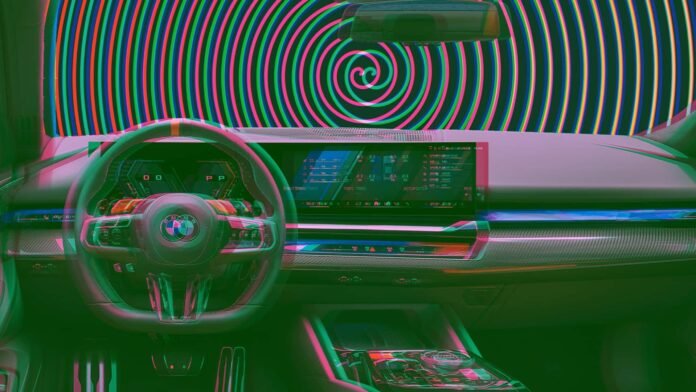- The lack of noise combined with EV’s strong surge of acceleration can accentuate car sickness symptoms.
- One study found a direct correlation between strong regenerative braking and passengers feeling sick.
- Adding acceleration noise, vibration and visual cues could help alleviate the issue for some people.
Accelerating in an electric vehicle is a very different experience from what you get in a gas-powered one. Some would say the rush of instant torque is much more fun. But others say they get carsick very easily in an EV, even though they can stand long hours in a combustion car just fine.
So why does that happen? Science, thankfully, might have an answer.
They can’t quite put their finger on what makes them feel unwell, but science might have the answer.
To blame is not, as some seem to think, the electromagnetic field generated by the traction battery and high-voltage electronics. Sure, it’s much more powerful than in a combustion car, but it’s still far too low in intensity to have any kind of effect on your well-being, even after prolonged exposure. The real answer is a lot more straightforward.
The Guardian quotes William Emond, a PhD student who is researching the reasons behind car sickness at France’s Université de Technologie de Belfort-Montbéliard.
Emond explains that “Greater sickness in EVs can be attributed to a lack of previous experience, as both a driver and as a passenger, where the brain lacks accuracy in estimating the motion forces because it relies on previous experience in other types of cars.”
He went on to explain that “if we are accustomed to traveling in non-EVs, we are used to understanding the car’s motion based on signals such as engine revs, engine vibrations, torque, etc. Yet, traveling in an EV for the first time is a new motion environment for the brain, which needs adaptation.”
This basically means that EV passengers’ brains (and their inner ear) just aren’t used to the noiseless (and often very strong) acceleration that these vehicles provide. Since there is no audible cue to tell them that the vehicle is accelerating, the motion will take their senses by surprise and make them feel unwell.
Regenerative braking, which occurs when you lift off the accelerator pedal and the vehicle slows down using its electric motors, may also contribute to the unpleasantness that some occupants feel. It’s what makes one-pedal driving possible in EVs. In a 2024 study involving 16 participants prone to motion sickness, a clear connection between regen braking and their level of nausea was drawn.
It concluded that the more powerful the regen, the higher the chance it had of making occupants feel sick, stating that “the findings highlight the importance of motion cues in EVs and provide insights into the design of RB systems and corresponding human-machine interaction strategies.”
So the problem is the lack of visual and sensory cues to tell occupants what the car is doing or what it’s about to do. One way around this would be to provide artificial signals, whether they are visual, audible or even vibrational cues, to help alleviate the symptoms of those afflicted.
Maybe there is more to Mercedes-AMG’s upcoming EV, which simulates the sound and even the rumble of a V-8 engine, than we initially thought. With three motors and over 1,300 horsepower, as well as very powerful regen braking, the simulated engine may help those prone to motion sickness cope with the forces acting upon their body better than in a completely silent EV.
It sounds like a great car to study further, turning the faux ICE mill on and off and observing in real-time whether it helps occupants feel better.
Speaking from experience, I also felt inexplicably carsick in a couple of EVs, even while driving. One of them was the BMW i4 M50, which I drove around a mountain road where I’ve tested many cars. I drive all cars in a similar manner around that road, but it was only the i4 that ever made me feel queasy. I’ve driven a few EVs on that road since, but none quite as brutally quick as the i4, which recently got even quicker.






